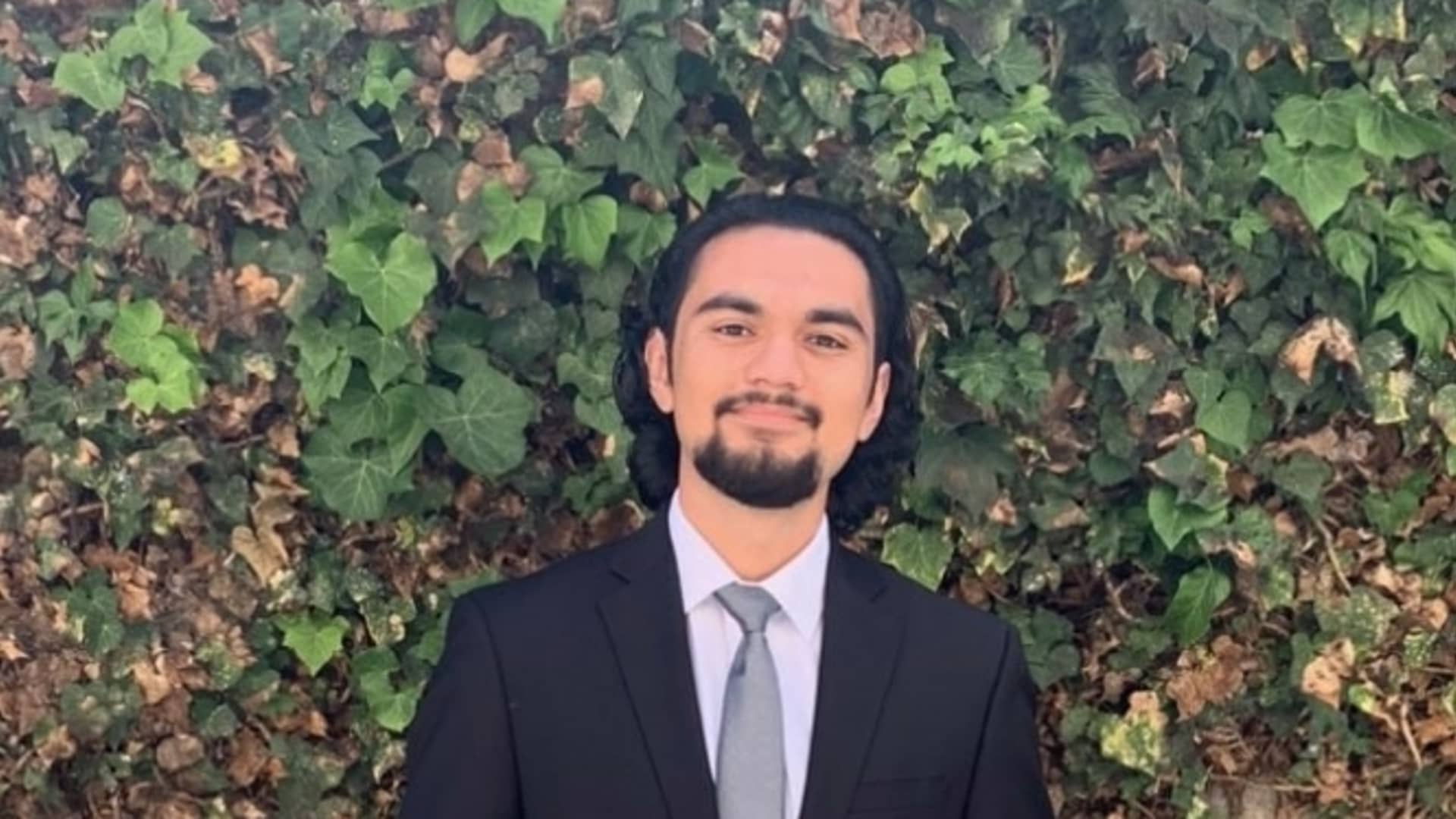As college costs soar and enrollment falters, there’s an alternative to a pricey four-year degree that’s been largely under the radar, until recently.
But Gabriel Quezada, 17, was reluctant to try it.
His father, Humberto Quezada, said he first heard about the Early College High School in Costa Mesa, California, when Gabriel was in third grade. But when Gabriel got older, it was hard to convince him to go. So they made a deal: Gabriel would start as a freshman, but if he didn’t like it, he could switch to his local public school.
More from Personal Finance:
How to understand your financial aid offer
The cheapest states for in-state college tuition
These 4 moves can help you save big on college costs
“Early college” programs are a type of dual enrollment that allows students to complete college-level coursework while they are still in high school.
Ultimately, Gabriel stuck it out. This June, he will graduate with his high school diploma and an associate degree in business under his belt. “That’s 60 or so credits done,” he said.
Already, he has been accepted to the University of California, Los Angeles and half a dozen other schools, but is still waiting on several scholarship opportunities, including one from the Angels Baseball Foundation, which would cover all four years of college. ”I am hoping I won’t have to take out many loans or any loans at all,” he said.
Completing some coursework at a community college and then transferring to a four-year school is a proven pathway to getting a degree for significantly less money.
After enrollment in two-year colleges nosedived during the pandemic, a number of students are now catching on, according to a new report by the National Student Clearinghouse Research Center, which showed a jump in dual enrollment.
“It’s encouraging to see this second straight year of growth in spring freshmen and dual-enrolled high school students,” said Doug Shapiro, the research center’s executive director.
How ‘early college’ programs work
Unlike Advanced Placement, another program in which high school students take courses and exams that could earn them college credit, dual enrollment is a state-run program that often works in partnership with a local community college.
These programs are not restricted to high school students on a specific — and often accelerated — academic track, as many AP classes are.
Not all students graduate high school with an associate degree, but most finish with at least one year of college credit, which gives them the option to enter college as a transfer student.
At least 35 states have policies that guarantee that students with an associate degree can transfer to a four-year state school as a junior.
That shaves two years off the cost of a bachelor’s degree, effectively cutting the tab in half, as well as the student loan debt.
Early college students are also more likely to enroll in college and earn a degree compared with their peers who were not enrolled in early college programs, according to one study by the American Institutes for Research.
“Our research shows that early colleges are an effective way to increase rates of college-going and college completion, and that the return on the investment in these programs is positive for both the student and society at large,” said Kristina Zeiser, AIR’s principal researcher.
Although there are up to 900 early college programs nationwide, according to Zeiser, not that many people know about them.
‘A very smart way to start your higher education’
“The culture is different from your average high school,” said David Martinez, principal of the Early College High School.
The high school is a Title I school in the Newport-Mesa Unified School District of Orange County, California, which means there is a high percentage of low-income students. Funding is provided by the district and the state. “Parents don’t pay a dime,” Martinez said.
Students take a mix of high school- and college-level courses, shortening the time it takes to complete a high school diploma and one to two years of college coursework.
“Families need a 21st century approach to prepare their kids for college, and this is one of the ways to do it,” Martinez said.
Families need a 21st century approach to prepare their kids for college, and this is one of the ways to do it.David Martinezprincipal of Early College High School, Costa Mesa, California
Nearly two-thirds of community college dual enrollment students nationally were from low- or middle-income families, according to an earlier study from Columbia University’s Teachers College.
Of those students, 88% continued on to college after high school, and most earned a degree within six years.
“It’s a very smart way to start your higher education,” said Martha Parham, senior vice president of public relations at the American Association of Community Colleges.
Over four years, early college programs cost about $3,800 more per student than traditional high school, according to another study by AIR.
However, the estimated return on that investment is nearly $34,000 in increased lifetime earnings.
“Getting an associate’s degree for free can really put you on a path where everything seems more feasible,” Zeiser said.
